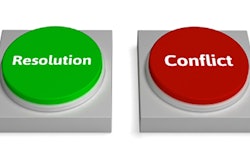
Article is reprinted with permission from The Practical Real Estate Lawyer
Many construction disputes can be resolved through mediation. This series of articles addresses some of the best practices that can lead to success in mediation. The series considers the entirety of the mediation process from preparation for mediation, the mediation session itself,and completion of mediation (if successful, through settlement agreement).
Author Steven C. Bennett wrote an extensive article covering the construction mediation process, so ForConstructionPros.com has broken the article into three smaller articles summarizing parts of Bennett’s original article. The first article discussed preparing for mediation. This second article takes a look at conducting the mediation. The third article summarizes completing the mediation process.
This Part concerns the actual “live” mediation sessions, wherein the parties meet with the mediator in person, sometimes in joint session and sometimes in private caucus, to explore possibilities for settlement.
Set (and observe) ground rules for mediation
Often, as part of the pre-mediation process, the parties and their counsel establish “ground rules” for the mediation. In some instances, the ground rules will be reflected in a specific agreement (often, a form prepared by the mediator), which the parties and/or counsel sign in advance of the mediation sessions. If there is no agreement on ground rules, one of the first tasks in the live mediation sessions is often to discuss and agree on basic rules that will affect the conduct of the mediation. The parties often prepare an express written agreement on (at least) the fundamental ground rules for the mediation.
The rules set the tone for later discussions; and they serve as a reminder to the parties of what they came to do — determine whether a reasonable, fair, consensual resolution to their dispute is possible.
The most elemental (and most widely-shared) rule is that all discussions among the parties, and discussions with the mediator, are for settlement purposes only, and cannot be used as evidence in any subsequent proceedings. A related rule is that the mediator’s notes, if any, of the discussions, are confidential, and will not be subject to subpoena after the mediation (indeed, the mediator may be asked to destroy all such notes). And the mediator will never be called as a witness in any proceeding. Finally, a typical rule of confidentiality is that the mediator will not reveal the content of discussions with one party to any other party in the mediation, without authorization.
The opening statement
The opening statement is part of negotiation, even though often it does not involve statement of a specific demand or offer of settlement. The point of the statement is to advance the process of identifying the key issues in the case, which the parties will typically discuss as part of their negotiations. The opening statement, moreover, can set a positive tone for the mediation.
One simple form of opening statement is a timeline of important events in the life of the project. When did problems first arise? When were requests for changes made? A timeline, listing these kinds of important dates, can help educate the mediator (making it easier for the mediator to facilitate later negotiations).
A key element of an opening statement is a clear summary of your side’s position regarding damages. An often-missing element of opening statements (and pre-mediation statements) is a realistic analysis of the costs of the dispute if no settlement arises.
Remember that preparation of an opening statement, should be a team effort. The statement should be strictly accurate, and aimed at the most important “big picture” issues in the case.
Get organized for negotiations
If they have not already been exchanged as part of pre-mediation disclosure and/or the submission of pre-mediation statements, bring multiple copies of critical documents to the mediation. The ability to retrieve, review and refer to critical documents quickly means that you can maintain a position of strength throughout the negotiations, rebutting factually erroneous statements, responding to financial analyses, and confirming the status of pleadings and proceedings in whatever arbitration or litigation may be ongoing.
Maximize the benefit of private caucusing
A private caucus is a time for candor. The caucus is cloaked with confidentiality. The private caucus should be part of a creative effort: to analyze the possibilities for settlement, to gain insights into the strengths and weaknesses of each side’s position, and to plan next moves in the negotiations.
Maintain a positive attitude
Anger and emotionality should be checked at the door to the mediation room. The easiest, most professional response to anything upsetting in mediation is simple: acknowledge the comment (“I hear you”); acknowledge the validity of the other person’s perspective, without admitting that it is correct (“you have given me something to think about”); and express confidence in the process (“I am glad we are having a candid discussion; that’s what is needed to clear the air and get a resolution”). Make these kinds of points in your own way. But recognize that “my way or the highway” may work when you’re in command of an organization, but it can fail miserably in the context of mediation.
Don’t waste time
When the parties separately caucus, the mediator may spend lengthy periods with one party, while the others wait in their separate rooms. Avoid developing an attitude of frustration, that the process is taking too long, and you are wasting your time. The process takes as long as it takes.
Discuss the facts and law of the dispute, planning strategy in the event that the dispute does not settle. The negotiating team can always benefit from fresh review of information gathered in the mediation.
Part 1: Preparing for Mediation
Part 3: Completing the Mediation Process
Read the entire article, Construction Mediation: Best Practices for Success.
Steven C. Bennett is a partner in the New York City law firm of Park Jensen Bennett LLP. The firm, consisting of three partners who previously served in the United States Attorney’s office together, and later (separately) as partners in three major international law firms, focuses on commercial disputes and white collar investigations. Mr. Bennett has extensive experience in construction dispute resolution, and also serves as an arbitrator and mediator for the American Arbitration Association.

















